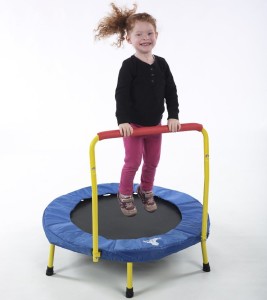-
08 February 2016
-
0 comments

Okay fellow Moms and Dads, here we are, right smack in the middle of the dreaded Seattle winter. It’s raining almost everyday, it’s cold (to us), it’s dark by 5 pm, and if your house is like mine, your kids are cooped up and bouncing off the walls. With at least a couple more months before the ground dries up and we have light in the evening, I thought I’d offer a few fun ideas on how to get some good ol’ fashioned active play in at home until you and your littles can get back to their favorite park. Below is a list of five simple sensory motor activities that will be sure to get some wiggles out.
First, a quick lesson in sensory processing. Wait, sensory what?! Sensory processing is the term used to describe how our brains process and integrate sensory information from our surroundings and our bodies in order to effectively complete the countless tasks we are faced with each day. This is required for everything we do, from getting out of bed and brushing our teeth, to preparing and eating a meal, to driving, to going for a run, to kicking up our feet after a long day to watch our favorite show.
Did you know that we actually have seven senses, not five? It’s true. In addition to our sense of taste, touch, smell, sight and hearing, we also have two very important body sensations: proprioception, and the vestibular sense.
- Proprioception refers to our body’s sense of its own movement and is provided by feedback from our muscles and joints; it is what informs us of our body’s position in space and it contributes to our sense of body awareness.
- Our vestibular sense is processed in the inner ear and gives us information about the movement and position of our head; it contributes to our sense of balance, our posture, and our ability to maintain a stable visual field.
“And why do I need to know all this?” you’re probably asking. First off, our brain’s ability to integrate our proprioceptive and vestibular senses, along with our senses of touch and vision, is what lays the groundwork for our motor development. Think of it this way – it’s awfully hard to climb ladders and cross monkey bars with a vague sense of proprioception, and it’s challenging to learn to ride a bike or roller skate when your vestibular sense is off.
Secondly, it’s important to note that sensory motor activities and experiences are very subjective and have varying effects from child to child (and person to person). While swinging on a swing may be calming and relaxing for one kiddo, it can be really exciting and arousing for another, and scary and nerve-wracking to yet another. As a result, this list of activity ideas comes with a caveat: find what works for your child. Ideally, you want to figure out activities that get them moving and give them the input they need, but leave them feeling calm and organized rather than revved and chaotic.This will take some trial and error, but as a general rule:
- heavy work activities that provide a lot of intense input to muscles and joints are usually calming (think pushing, pulling, dragging, lifting, carrying, hanging, climbing, jumping, crashing)
- providing deep pressure to your kiddo’s entire body is also calming. For example, full body hugs/squeezing your child into a tight ball in your lap, rolling a exercise ball over your child with a good amount of pressure, sandwiching your kiddo between pillows, having them squeeze into a tight space, or having them wear weighted clothing/blankets
- movement activities with a lot of speed, orbital or spinning motions are generally stimulating. If your kiddo is seeking this kind of intense input, let them get it in small doses, then follow it up with some heavy work or deep pressure.
Okay, all that being said, what can you do at home to get your kiddos tuckered out without seeing them spin out of control? Here’s a list of my favorite indoor activities, many of which I remember loving when I was a kid. But with each one – safety first! Make sure to lay down the ground rules before playing to avoid any owies.
- Make a homemade swing. All you need is sheet or blanket and two adults. Each adult holds two corners, lay a kiddo on top, and swing them side-to-side or up and down. For added input, stand next to a cushy couch or bed and swing, swing, swing then dump them out for a good crash. This is a good vestibular activity, and adding the crash gives them some full-body tactile and proprioceptive input.
- Indoor sledding. Again, just a sheet or blanket is all you need. Lay it out on the floor, have your kiddo sit or lay on top, then pick up two of the corners and give them a thrill as you drag them around your hardwood floors. I remember my uncle doing this with us as kids and when we got a little more brave he’d take us “sledding” down the stairs. Another great vestibular activity.
So there you have it! Now you can embrace that next rainy day with a little creative indoor PLAY!
Kristin Bedard leads an “Ask the OT” play date on Wednesdays at Roo’s World of Discovery at 11am. She has been a practicing pediatric OT for the past six years and specializes in working with children who have sensory processing difficulties. Kristin brings a wealth of knowledge from her background in both the clinic and school settings and we are excited to have her as a resource for our Roo’s World families! You can learn more about Kristin by visiting her website. She is accepting new pediatric occupational therapy clients and sees them at Roo’s World.
Share Social
